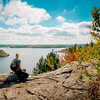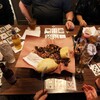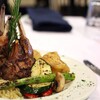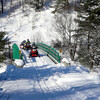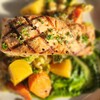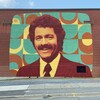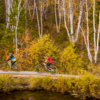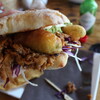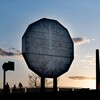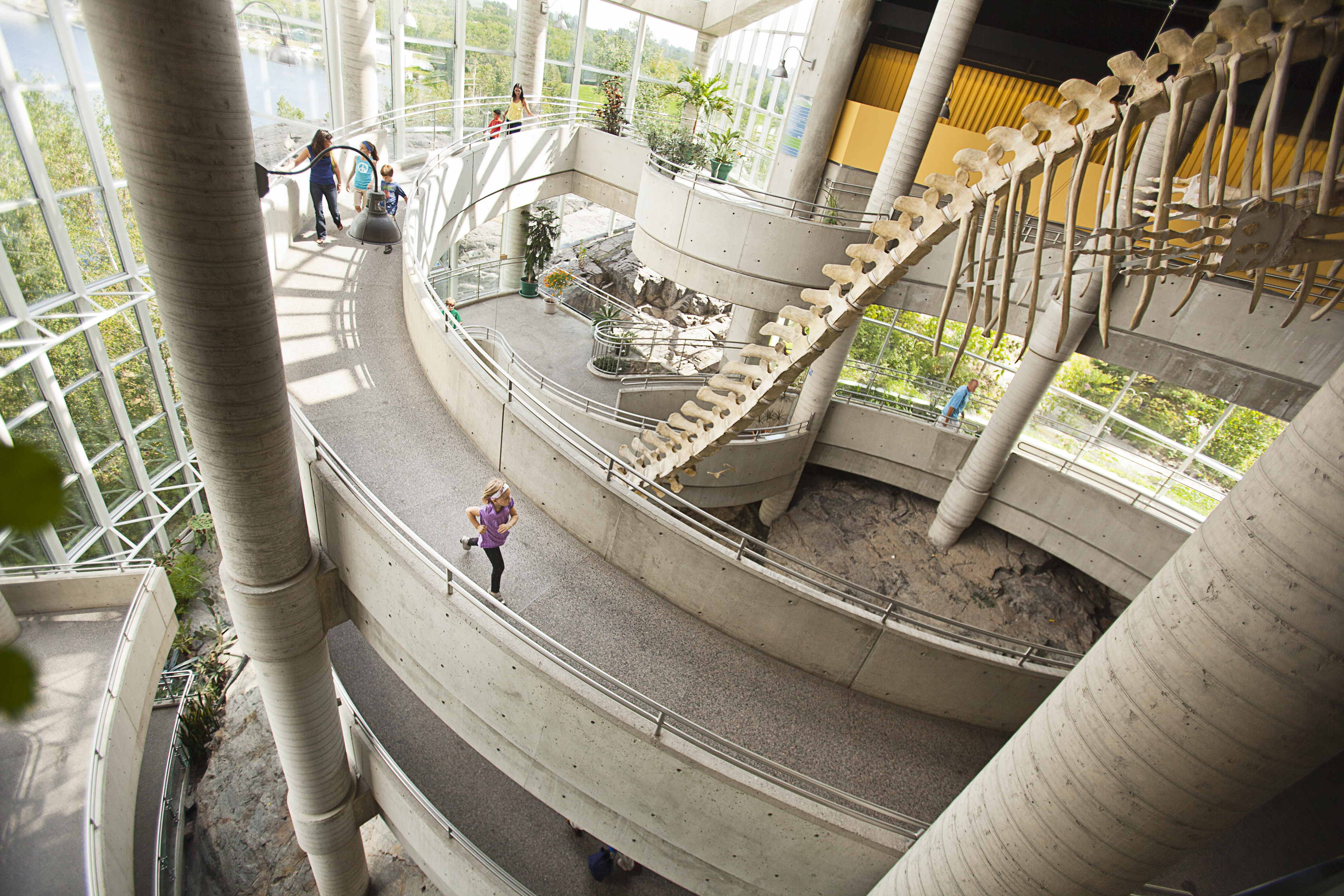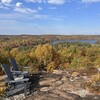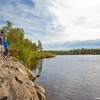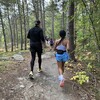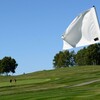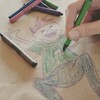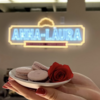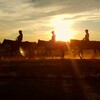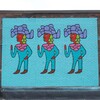
Surprising Sudbury

The city that lies somewhere between a rock and a hard place — mainly nickel and copper ore, actually — is undergoing a dramatic facelift. Mention the place to anyone who saw it a few decades ago and barren wasteland comes to mind from a century of mining.
Comparison with a moonscape grew into an urban myth following the 1972 visit by 3 American astronauts preparing for the Apollo 17 mission. Their purpose was learning to recognize meteor impact sites, but the media popularized the idea of Sudbury as a lunar training ground.
The insulting analogy was a kick in the pants for residents, prompting changes. In a BIG way. Sure, the community still sits on a huge chunk of ore; it didn't get the title of world's largest nickel smelting operation for nothing.
Now the landscape is returning to the beauty that drew Group of Seven landscape painters in the early1900s. In cooperation with Sudbury Tourism my wife Lis and I made a 3-day tour to see what's up.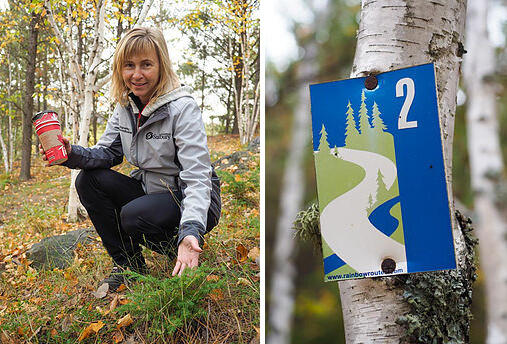
Tina McCaffrey, supervisor of the Regreening Program for Greater/Grand Sudbury, met us at Jane Goodall Reclamation Trail (Jane cut the ribbon in 2002). It's one of the city's 10 walking trails.
Tina McCaffrey, supervisor of the Regreening Program for Greater/Grand Sudbury, met us at the Jane Goodall Reclamation Trail (Jane cut the ribbon in 2002). It's one of the city's 10 walking trails.
Hard to believe, but13 million trees have been planted since 1978 on half of the 82,000 hectares impacted by smelter pollution. Beginning with hit and miss procedures, the program has become a globally recognized model for ecological restoration, even winning a U.N. award en route.
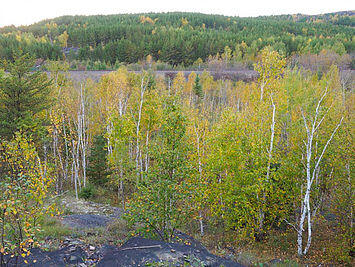
You can still see black rocks but these birches prove the greening is well under way. I waited in vain for sunshine and a passing train to complete this picture. Wouldn't you know, just after leaving I heard an engine whistle as sun pierced the clouds and everything sparkled. C'est la vie. Did I mention Sudbury is bilingual?
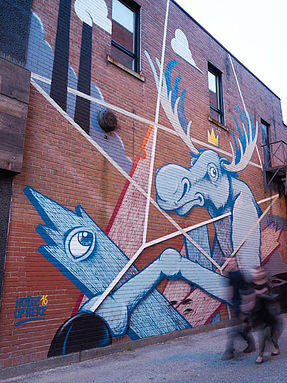
On our way to dinner we passed several murals that spruce up the downtown core. Annual summer festivals continually add new work.
A common complaint about small towns from both business and holiday visitors is that food is often less than inspiring. The usual fast food suspects dot every urban landscape, but Sudbury goes beyond that with some sophisticated eateries. Respect is Burning (named even before it nearly burned down during renovations) is one of those. "Surprise me!" dinners like this can be arranged on advance notice.
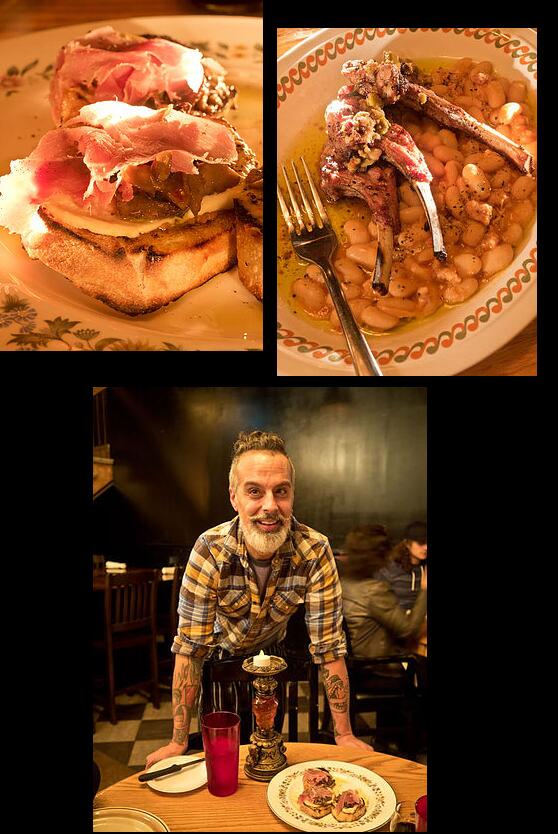
Our appetizers of crostini (with prosciutto & mushrooms & cheese) and lamb Scottaditto (with smashed olive salsa and Tuscan baked beans) were going down well when chef/owner Rob Gregorinni asked if we'd like to step it up a notch.
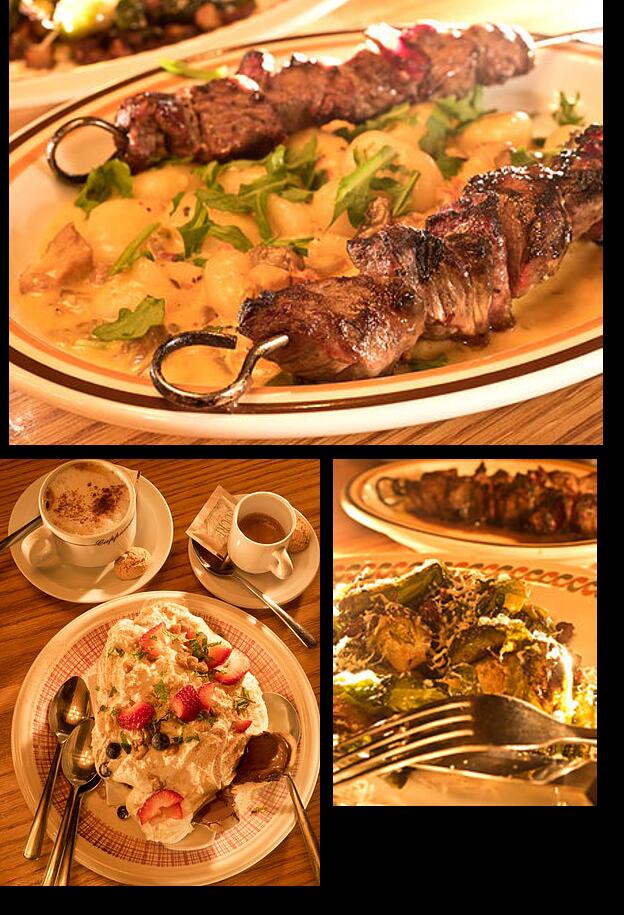
Rob rearranged a few items for my photos, adding ember grilled sirloin beef Spiedini with anchovy & Nebbiolo wine sauce, gnocchi plus brussel sprouts roasted with pork belly bacon & grated cheese. Dessert was a mix of Italian classics. Pinch me; are we still in Sudbury?
Next morning we made the 10-minute drive from the Hampton Inn to Science North. (Don'tcha just hate those long commutes?) But first I looked out a back window and tweeted how the trees were about to enter the hotel.
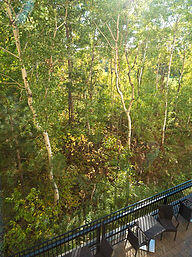
Science North is a hands on exploratory world for kids small and big (that's us!). Inside, it's got a bit of everything. Kids love it. You enter through solid rock (what else?). Outside, it backs onto Ramsey Lake, pride of the town.
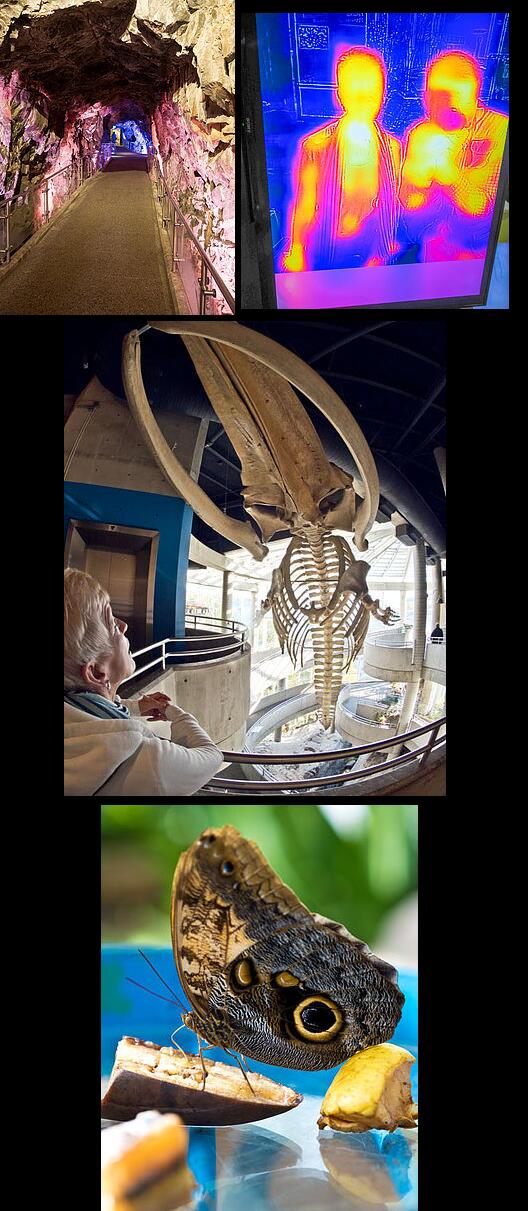
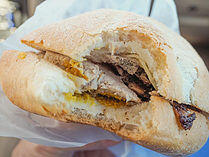
Grabbing a porketta sandwich (a Sudbury signature bite) from Regency Bakery & Deli, we headed for the A. Y. Jackson Lookout 30 minutes away on Highway 144 to rendezvous for a plein air painting lesson.
The trail to Onaping Falls isn't long but requires good footwear and a bit of agility; this isn't Disney World. Group of Seven painter A. Y. Jackson famously painted here in the spring of 1931. The painting was bought by secondary school students, then stolen when Jackson died in 1953 and never recovered. Not exactly a public-minded act. Ditto for unsightly graffiti on the rocks.
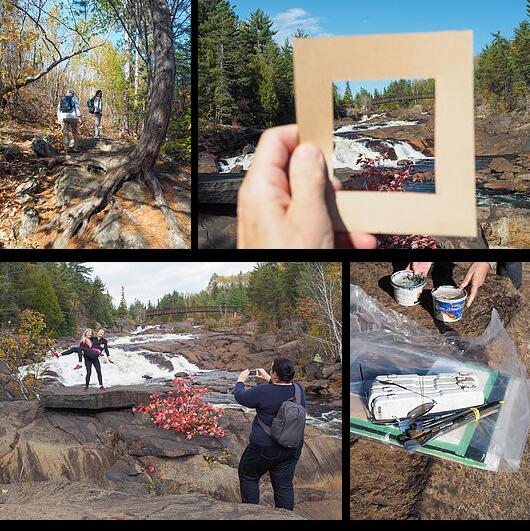
Art Gallery of Sudbury staff members Nancy Gareh (Education & Program Mgr) and Karen Thistle (Mgr, Development & Communications) were giving us a taste of the gallery's warm weather painting classes. Nancy brought out the supplies while Karen and I played photographer. It was fun, although I don't think our finished pieces will upset the art world anytime soon.
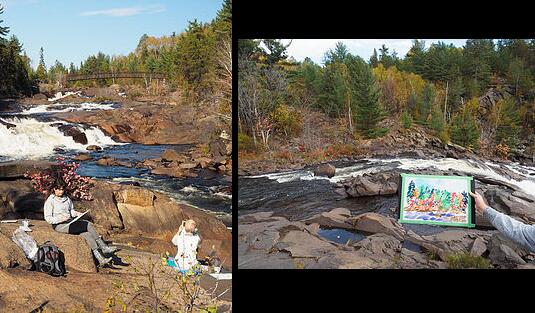
Back in town at the gallery, Deanna Nebenionquit (Curator Alternate and Collections Manager) proudly showed us a pair of prized possessions: a couple of watercolours by Franklin Carmichael.
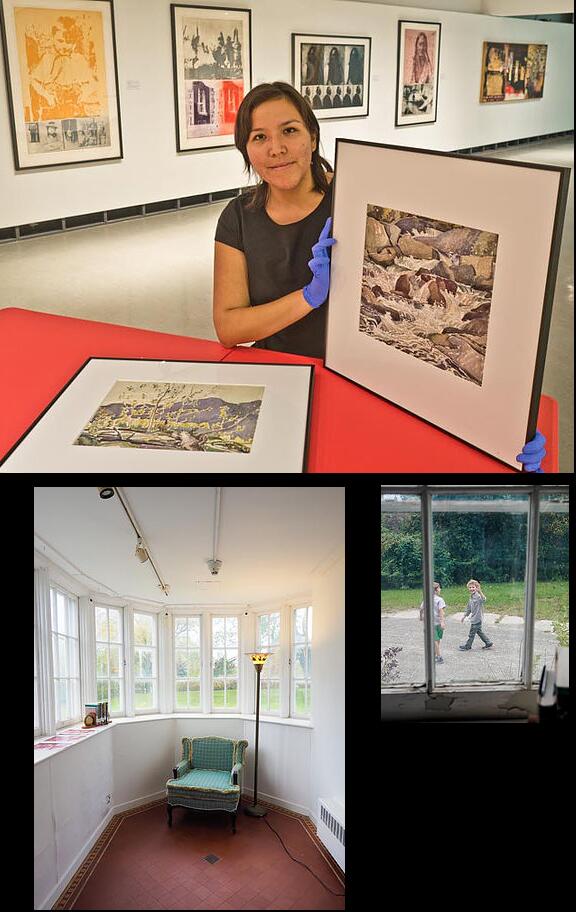
The gallery occupies an old home (which is said to be haunted) in a residential neighbourhood. Plans are underway for a much larger modern gallery, to be named Franklin Carmichael Art Gallery after Group of Seven member A. J. Carmichael whose family has donated many paintings. Only time will tell if the ghosts follow.
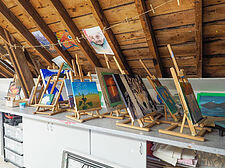
Student art work in the crowded upstairs studio space.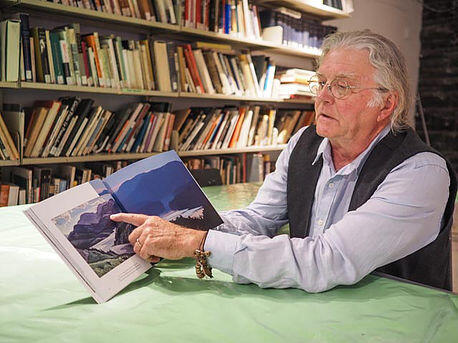
We enjoyed the opportunity to meet Jon Butler, retired newspaperman, photo artist and resident of the nearby region of La Cloche, a favourite of the Group of Seven. Jon drew our attention to Sue and Jim Waddington who have been tracing Group of Seven and Tom Thomson locations for 39 years. They mention and use some of Jon's photos in their book Following In the Footsteps of the Group of Seven.

Downtown Sudbury has developed in the usual higglety pigglety manner of many Canadian cities. Checking it out we came across Laurentian U's new School of Architecture, more murals, the Bridge of Nations with about 90 flags representing the community, the INCO Superstack (tallest in Canada), then halloween preparations at Dynamic Earth on the edge of town where our little nickel met Big Nickel, the world's largest coin. Height:10m/30 ft. Weight: about 12,000 kg/26,450 lb.
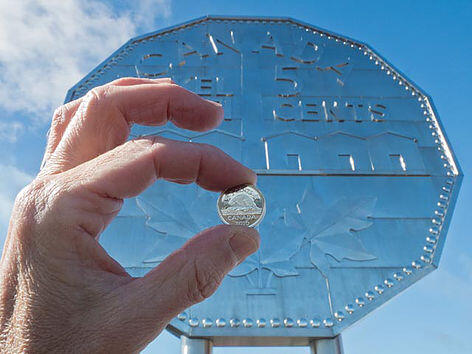
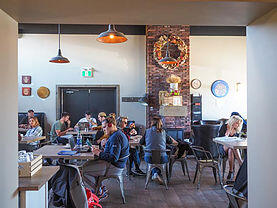
A pair of coffees and a pumpkin muffin from Salute Coffee fueled us for a one-hour drive to Killarney Provincial Park southwest of Sudbury, land and waters of iconic Group of Seven landscapes.
We bivouacked for 2 nights at Killarney Mountain Lodge, just outside of Killarney Provincial Park. Rocks grow between the old-fashioned cottages, the food is plain and the views spectacular. It's pricey, so we hoped for good weather, which in the end was a 50-50 split between sun and clouds. Killarney is a wilderness park accessible by a single main road plus a few offshoots. Hiking and canoeing are the best ways to see and experience the landscape as early Canadian painters did. Views are fabulous year-round, but autumn takes the trophy for colour.

Photo illustrations: chairing the view Olympus Vintage Art Filter; Adobe Lightroom slightly computer enhanced jack pines and moon at sunset.
See more stories and photographs at Gary Crallé's website www.garycralle.com
Recommended Articles
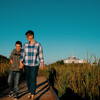
Sustainable Sudbury: An Eco-Friendly Guide To Travel
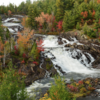
Experience the Group of Seven in Sudbury, Ontario
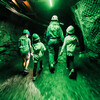
Rock On: Exploring Sudbury’s Impact Crater, Shatter Cones, and Geological Wonders
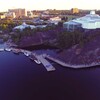
Why Conferences are Better in Sudbury, Ontario
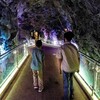
Why Sudbury is the Perfect Weekend Getaway
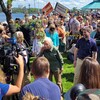
Discover Sudbury's Most Iconic (and Easy to Visit) Movie & TV Locations

An Insider's Guide to Sudbury

The Hidden History of Thomas Edison in Sudbury, Ontario

A Shoresy Lover's Guide to Sudbury

This Underground Lab in Sudbury Is Studying the Smallest Particle in the World
Sudbury Festivals 2025
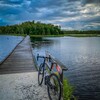
Sudbury’s Best Bike Rides

4 Indigenous Experiences in Sudbury: Shops, Galleries, and Adventures
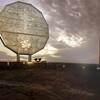
How Long Does It Take to Clean Sudbury's Big Nickel?
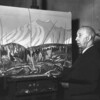
The Sudbury Art Heist

11 Must-See Murals in Sudbury, Ontario
